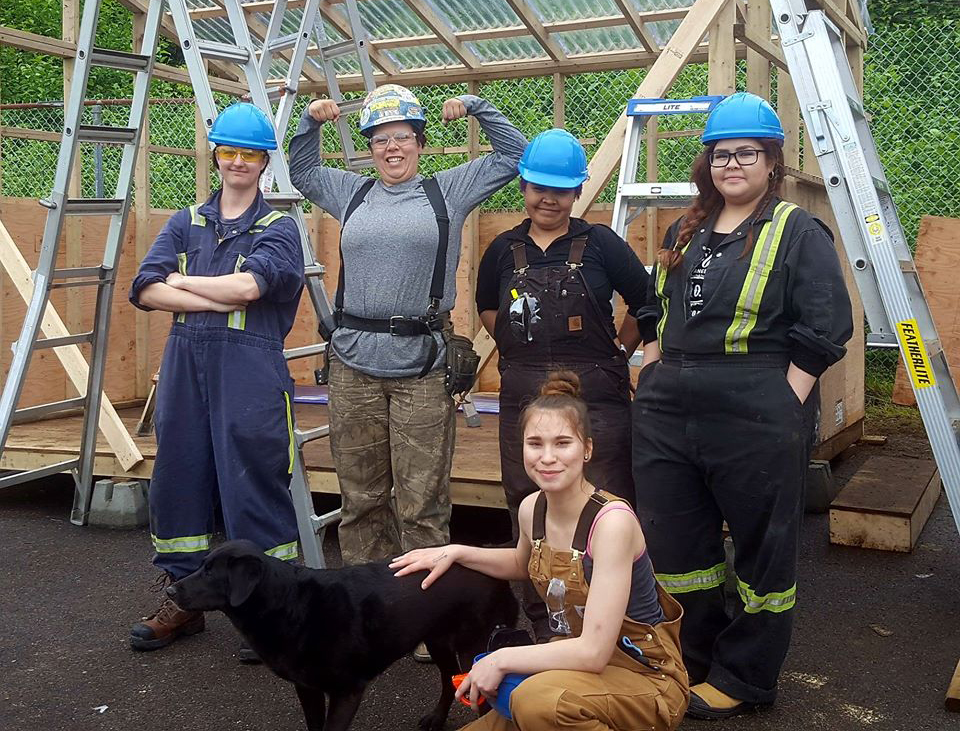 Executive Summary
Executive Summary
The COVID-19 pandemic highlighted the critical need for digital infrastructure and internet access across Canada, particularly in rural and remote communities. Despite advancements, approximately 1.4 million households in Canada still lack high-speed internet, widening the digital divide.
Recognizing this issue, the Hecate Strait Employment Development Society (HSEDS) developed WorkLabNorth, an online career development and training platform tailored to rural and remote communities in Northwest British Columbia. WorkLabNorth offered free, accessible and culturally relevant virtual career development resources, including a public job board, employment-related skills development modules and an interactive résumé builder. The online platform and content were designed to maximize access by those with limited broadband and download capacity.
To prioritize accessibility, the platform was optimized for low bandwidth and set up to allow offline access. Because of its accessibility, the platform served participants across rural and remote communities despite the limited digital infrastructure.
This project highlights the importance of digital equity and accessible design in addressing the digital divide. Moving forward, organizations must continue to prioritize solutions that consider accessibility restrictions, strengthen digital infrastructure and empower communities through digital skills.
Key Insights
Tailoring solutions to local and accessibility needs is critical for the success of digital solutions in remote and rural communities.
It is important to build flexibility into timelines to accommodate for delays.
Participants found the platform content, and especially the résumé builder tool, simple and straightforward to use.
 The Issue
The Issue
The COVID-19 pandemic accelerated the need for digital infrastructure and internet access across Canada. Remote work and online education increased the demand for digital skills and highlighted digital inequities. Remote and rural communities continue to face challenges accessing the internet due to having limited broadband, needing to pay per use and having sporadic access to wifi. According to the Canadian Radio-television and Telecommunications Commission, as of 2021, approximately 1.4 million households in Canada still lacked access to high-speed internet, with many of these households located in rural and remote communities.
Digital literacy is the ability to access, manage and understand information through digital technologies. Many rural and remote communities have limited access to services and digital devices, and low rates of digital literacy. With limited access to resources and educational opportunities, residents can face difficulties in developing the essential digital skills needed for today’s labour market. Accessible solutions are needed to enable residents in rural and remote communities to access services digitally that will enhance their digital literacy and take into account the limited internet access they have.

 What We Investigated
What We Investigated
HSEDS developed WorkLabNorth, an online career development and training platform accessible to those in rural and remote communities. The project ran from March 2021 to July 2023. The online platform was designed to find out whether a free, publicly accessible platform could effectively increase digital access and skills in rural and remote regions. The platform was customized to be accessible on low bandwidth, with downloadable content that could be used offline.
WorkLabNorth featured the following components:
- a public job board with employer profiles, regional skills training opportunities, free mini seminars and skills development activities;
- skills assessments, learning materials and resources for skills development in both soft skills and computer/work skills;
- an interactive résumé builder.
All materials and digital tools were designed to be concise, simple and engaging; free of technical jargon; accessible on mobile devices; and accessible despite low bandwidth, for those with limited internet connections and downloading speeds.
To ensure the platform would meet local needs, HSEDS inventoried its internal programming to understand what components could be moved to a virtual platform in response to pandemic restrictions. This involved meeting with organizational staff and instructors to discuss both the best delivery format and content for WorkLabNorth. Additionally, HSEDS consulted with community members to ensure the developed content was accessible and culturally relevant.
 What We’re Learning
What We’re Learning
The project was successful in designing and launching the WorkLabNorth platform
The platform offers employment and workforce development services and resources virtually that are accessible to its intended target population, including those in rural and remote communities with limited internet access. HSEDS’ collaboration with staff and community members at the beginning of the content development process helped them understand the needs of the community and develop culturally relevant and accessible content. HSEDS received positive feedback on the content from participants, who indicated that the résumé builder tool and overall platform content was simple and straightforward to use.
Building internal capacity fosters sustainable success
HSEDS strengthened internal capacity to ensure the platform would be successful and sustainable. The partner focused on taking time to find the right developer and created a platform that was fully controlled and maintained in-house to minimize ongoing service expenses. Through this process, HSEDS assessed whether its staff could manage the platform and offered training to address any skills gaps. Even though this approach took longer, partners felt this approach was key to the success of the platform and offered a more sustainable solution in the long term.
The platform was accessible to rural and remote communities
HSEDS ensured WorkLabNorth could be optimized for low bandwidth and offered compressed videos in smaller sizes; images for web viewing; and interactive elements to improve accessibility. Some of the content was also available in downloadable formats for participants to use offline. Additionally, the HSEDS offices set up public computers to allow participants to access the platform and to be able to save materials to use offline. These features helped ensure more participants could access the platform regardless whether or not participants had personal access to the internet or digital devices.
Project implementation challenges
HSEDS faced some challenges when implementing the platform. The timelines of the project were delayed in order to find the right developer and build a custom platform. HSEDS received an overwhelming number of developer applications, but many did not meet local needs, and securing a developer with the right experience took longer than expected. The project partner noted that having a clearly defined vision of the platform structure and functionality prior to connecting with potential developers would have helped to save time in the process. Additionally, developing a custom-built platform was much more time intensive than the organization had anticipated, and that shifted project timelines significantly. These delays impacted the organization’s ability to conduct testing with real users and collect data on users of the platform. HSEDS also faced difficulties in reaching participants to use the platform and identified that further resources were needed to increase awareness of the platform. In the future, having marketing or social media expertise would be helpful to promote the platform and improve engagement.
 Why It Matters
Why It Matters
Broadband access in rural and remote communities in Canada continues to be a challenge, with fewer than 60% of households in rural and remote communities having access to high-speed internet, and even fewer than that in First Nations, Métis and Inuit communities.
As the digital economy grows, and education, training and services continue to shift to being offered online, the lack of adequate and equitable access in rural and remote communities threatens employment and educational prospects for those without access while allowing those with access to advance quickly. Through Canada’s Connectivity Strategy, the Government of Canada is seeking to broaden access to high-speed internet, with a national target of 98% of households. However, efforts to date have not yet met the needs and ambition in many places that have been most affected by Canada’s digital divide.
Policymakers must concentrate on resolving the challenges that prevent high-speed internet access in Canada’s rural and remote regions.

State of Skills:
Innovation in Training, Recruitment and Upskilling for Skilled Trades
Canada needs to address long standing shortages of skilled tradespeople to advance policy priorities around decarbonization, affordable housing and transforming industry to add more value to what we produce.
For service providers in rural and remote areas, the findings from this project showcase the importance of creating digitally accessible content and tools and improving people’s digital literacy. Digital solutions can play a critical role in connecting people who live in remote or rural areas to resources, but only if they are designed to take into account the limitations of these communities. Organizations seeking to implement digital solutions need to understand the digital infrastructure available and work within this scope to create successful and sustainable tools.
Have questions about our work? Do you need access to a report in English or French? Please contact communications@fsc-ccf.ca.
More from FSC
College Transformation
The future is micro: Digital learning and microcredentials for education, retraining and lifelong learning
Long-Term Labour Market Scarring on Youth from Economic Shocks
How to Cite This Report
McLaren, K., & McDonough, L. (2024). Project Insights Report: North Coast skills hub WorkLabNorth. Hecate Strait Employment Development Society. Toronto: Future Skills Centre. https://fsc-ccf.ca/projects/north-coast/
North Coast Skills Hub is funded by the Government of Canada’s Future Skills Program. The opinions and interpretations in this publication are those of the author and do not necessarily reflect those of the Government of Canada.




